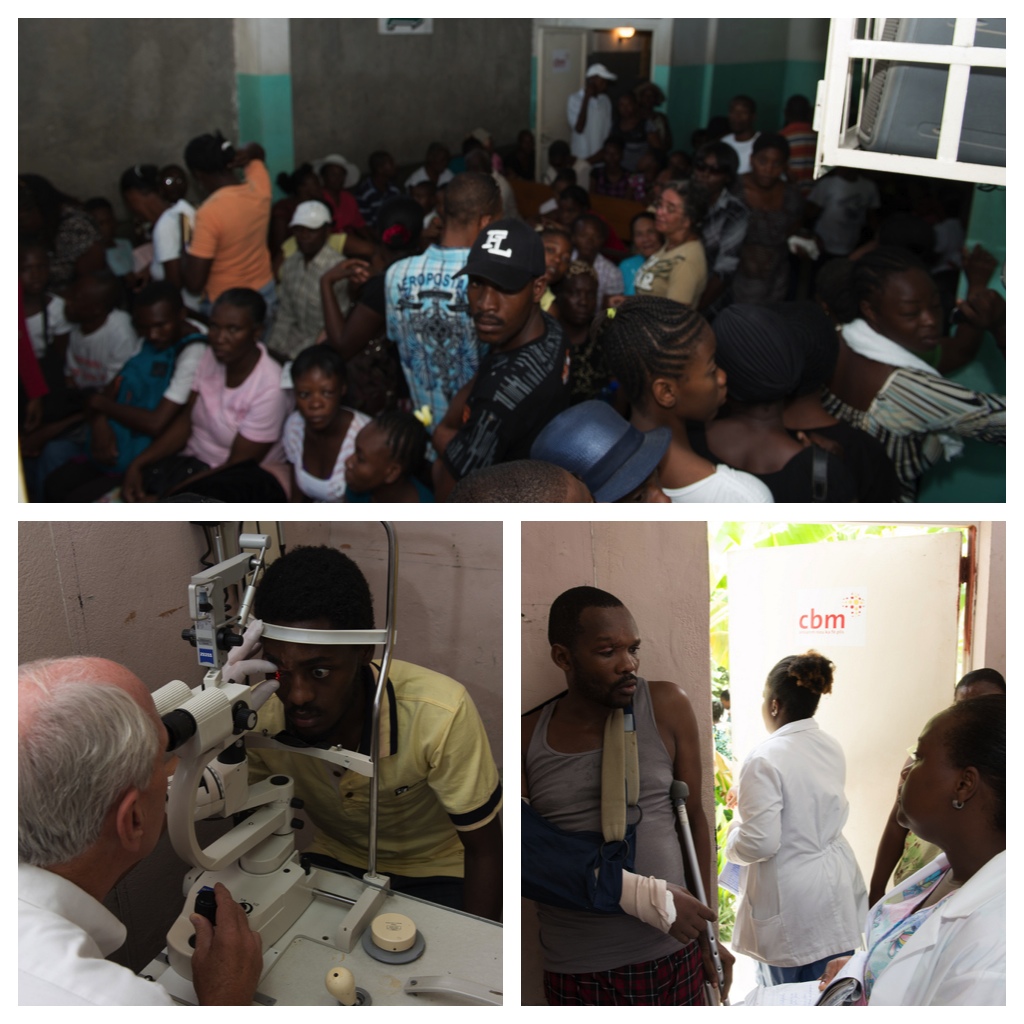Dr. Call, my former partner, and I returned to Haiti last week for another marathon session of surgery with the locals. My last visit was in March and Dr. Call hadn’t been in the interim, so we had quite a few waiting. This trip was different in that we are now sponsored by LDS Charities. We were not only going to perform surgery, but also to do some fact finding on what support LDSC could give in the form of equipment and construction. The waiting room, for instance, is a crowded, small, dark room, which usually contains about a hundred people when we arrive in the morning. It should realistically hold about 30, so everyone is standing and you can’t open the gate to get through without yelling at everyone to move back.

top: Waiting room at HUEH, LL: Dr. Call examining on broken slit lamp, LR: Resident doctor speaking with patient.
The equipment we use in Haiti is always in a state of disrepair. Once something breaks, it often is very difficult to get it fixed. We really take for granted how easy it is to get a specialty light bulb for our examining scopes back home. The surgical instruments are also a nightmare. Some of this is due to lack of training on how to take care of them. But in many cases, delicate instruments are used for any and all cases and just get worn out faster. During this particular trip, we had almost no instruments that resembled oculoplastic instruments we’d use back home. You have to learn to improvise. In this picture below, I performed a frontalis sling procedure on a young boy with a droopy eyelid. Normally, this surgery involves suspending the eyelid from the brow with a special thin silicone material, which allows the eyelid to open when the child raises their brow. Unfortunately, they had none of the necessary equipment or an implant. We found some silicone normally used for intubating the tear duct and ran it through the skin from the brow to the eyelid margin with a needle and sleeve (angiocath) normally used for placing an IV. This ended up working well and I actually repeated it on another patient the next day.

UL: young boy with droopy eyelid, UR: placing the sling material with an angiocath, bottom: handing over the case to a resident to close.
The sheer diversity of pathology we see each time we go is amazing. In the 5 days we saw patients, I saw more varied and advanced badness then I’ll see all year in my clinic back home. It is a real challenge, but very rewarding to recall those zebra diagnoses from my residency days.
We had a chance to travel to the city of Cap Haitien on the northern coast. A group of doctors, many of whom were trained at the hospital in Port-au-Prince, set up a clinic where they see a mix of “social” and private patients. The social patients are asked to pay a very small fee for their care, or receive it free. They sit in a bare-bones waiting room and are often examined in front of other patients. The private patients pay a higher price and get a nicer waiting room and a private consultation with a doctor. This system works well to give both groups adequate care and keep enough money coming in to cover most of their costs. The remainder of the costs are made up be charity sources, such as Charity Vision and others. Our plans are to try and establish a similar clinic in Port-au-Prince where some of the residents can set up shop, see patients, make a living, and remain in Haiti instead of leaving the country for a better job as many do.
